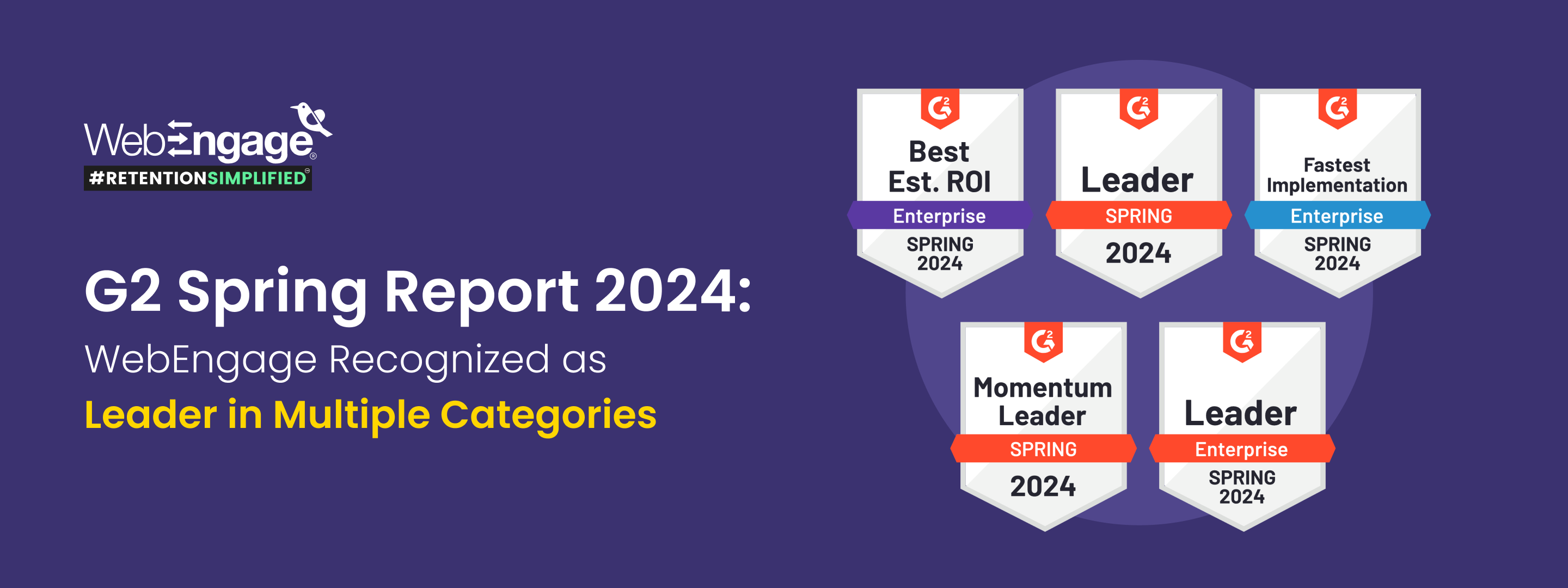Spotify conjured one of the biggest year-end marketing craze – the wrap!
From music to marketing, we can’t go on without reflecting on the year that was. So here we are – with our version of the most compelling marketing trends of the year and how WebEngage played a role in it.
At the start of 2023, words like purpose-led marketing, omnichannel, voice search, authenticity in the content, personalization, privacy, and platform governed the talks. Then, one day, AI knocked on the door.
Without further ado, let’s get into it.
1. The introduction of Generative AI
From content creation to content curation, chatbots to personalization, and predictive analysis to segmentation, AI pitched in everywhere, leaving marketers wanting more. 85% of marketers are already updating their skills because of AI, reports marketing data state of play.
Brands use AI to build content calendars, write blogs, copy ads, and more. Here is a detailed account of Plum using AI to write blogs at scale.
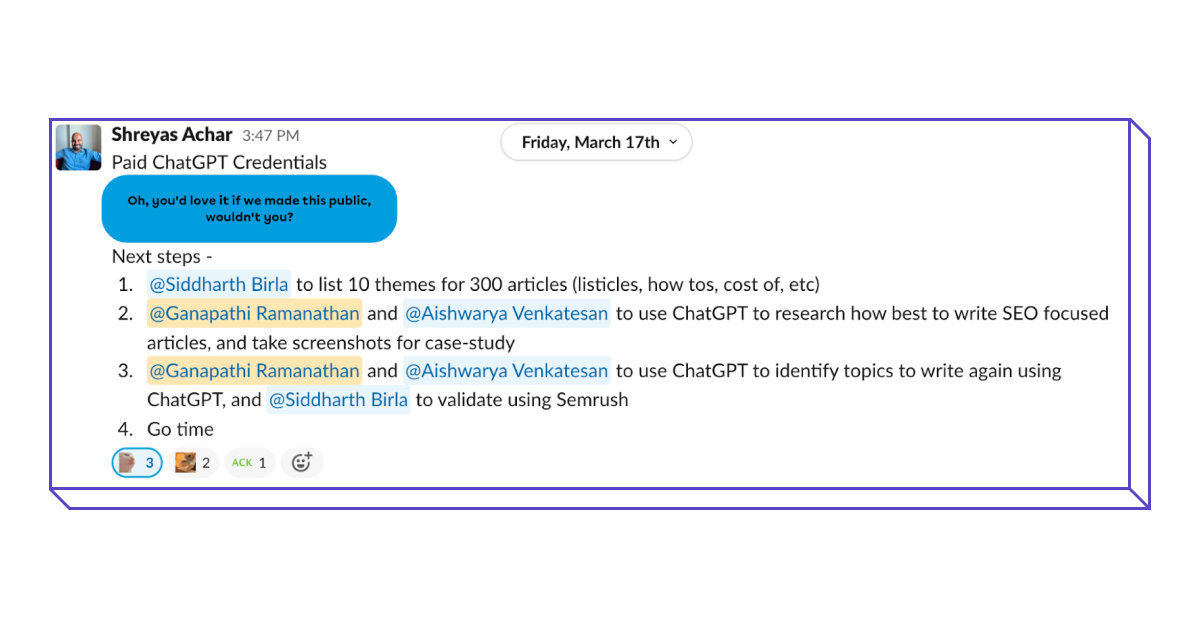
AI-generated text, exemplified by tools like GPT-4, and AI-generated images, led by technologies like DALL-E and Midjourney, brought new-age creativity to the table.
Then, of course, AI was used for audio generation, text-to-speech projects, predictive analytics, segmentation, lead scoring, and overall campaign management.
2. Hyper-personalization
A McKinsey study revealed that 76% of users are likelier to buy from brands that personalize. This year, brands went berserk with personalization from web to mobile and across omnichannel communication.
With big data in motion, customers do not want to go back to general, non-personalized recommendations across all touchpoints. As a result, brands are spending a lot on increasing their overall engine.
Collectively, the marketing fraternity deduced that the reward for delivering this would intensify their loyalty and retention, reduce churn, increase engagement, and contribute to overall growth.
Oral Care Brand Perfora Witnesses An 8X Spike In Conversions With Personalization
3. Consumer Privacy
One may wonder how privacy and personalization go hand in hand. It’s not like customers do not see the benefit of using data to offer personalized offers, deals, recommendations, and solutions, but at what cost?
85% of global adults want to do more to protect their online privacy. Use the data; don’t misuse, misguide, or breach any trust. Do not sell the data or collaborate with 3rd party vendors your customer didn’t sign up for.
Nearly all reputable organizations are changing ways of communication to build trust with customers, ensuring their data is safe. This communication allows customers to sign up for emails, pushes, SMS, or any marketing activity without apprehension.
In addition, regulatory bodies are invested in how marketers use their data, as evidenced by the Digital Personal Data Protection (DPDP) Act in India, the General Data Protection Regulation (GDPR) in Europe, and the California Consumer Privacy Act (CCPA) in the United States. Compliance protocols like Service Organization Control Type 2 (SOC2) are already being enforced across organizations.
4. Prioritizing social presence
Both millennials and GenZ are too busy to opt for traditional routes to seek assistance. So your brand has a chat, email, SMS, and call as a service, but where do most complaints go?
Social media, especially Twitter. Brands that ghost users online and don’t offer solutions take the heat in multiple ways. This type of marketing includes having a dedicated ORM team on social media to address customer queries.
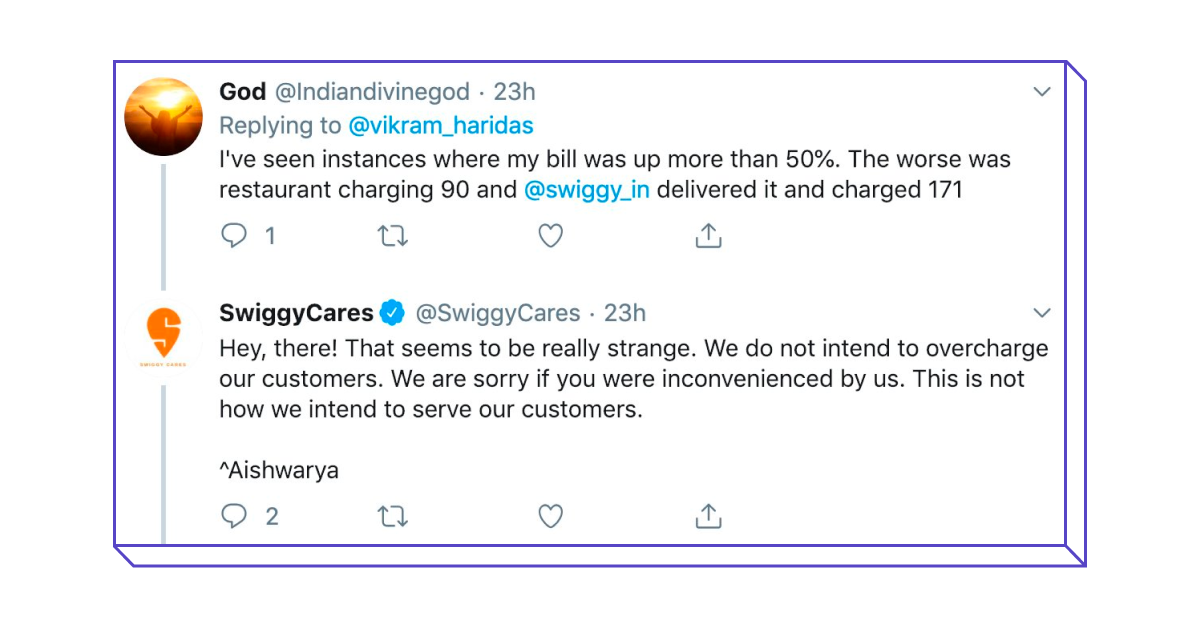
5. VR-based apps and tools
Unless you’ve been living under a rock, you know VR is taking over the advertising world. AR and VR are touted to boost the world economy by a whopping $1.5 trillion by 2030.
Many brands have now begun their augmented reality projects. Ikea recently built a VR showroom, Sephora launched a Virtual Artist app, and Lenskart allows you to wear eyewear using AR. Amongst the ones that went viral was Maybelline, as shown in the image below, using CGI techniques to create an artistic OOH.
In 2023, we saw decent AR and VR technologies adoption by brands across sectors to draw user attention and we can’t wait to see what 2024 has in store.
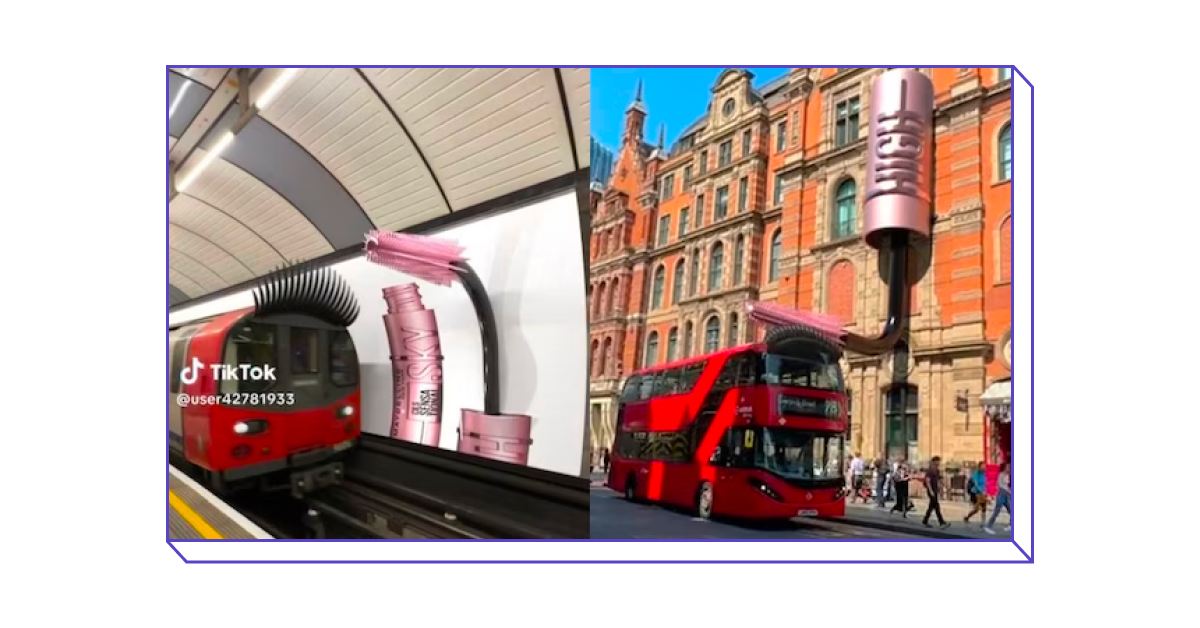
6. Working with the influencers
Influencer marketing is yet to reach the top of its bell curve. A trend that picked considerably around 2020 is still drawing in millions. This year, we saw a massive uptick in the adoption of micro and nano influencers (due to high engagement rates).
70% of Indians believe influencer marketing impacts them – making brands even more confident with each passing day.
Brands are also becoming more prudent with their selection, navigating through the challenges quoted by demographics, engagement rates, reach, relevancy, activity, tone of voice, and overall persona.
7. Experiential marketing made a comeback
In the 1990s, brands loved to engage a live audience, record the reaction, and publish it for the masses. This trend was seen in video, movies, radio, and print ads. With every brand in the queue, it had hit its peak, but apparently, it’s making a comeback.
2023 saw brands trying out experiential marketing in many ways. Here’s a recent example from Netflix India. To launch the movie Archies, Netflix bought a digital billboard that changed daily with the number of days left for the movie to go live.
Result? It’s a resounding hit on social media.
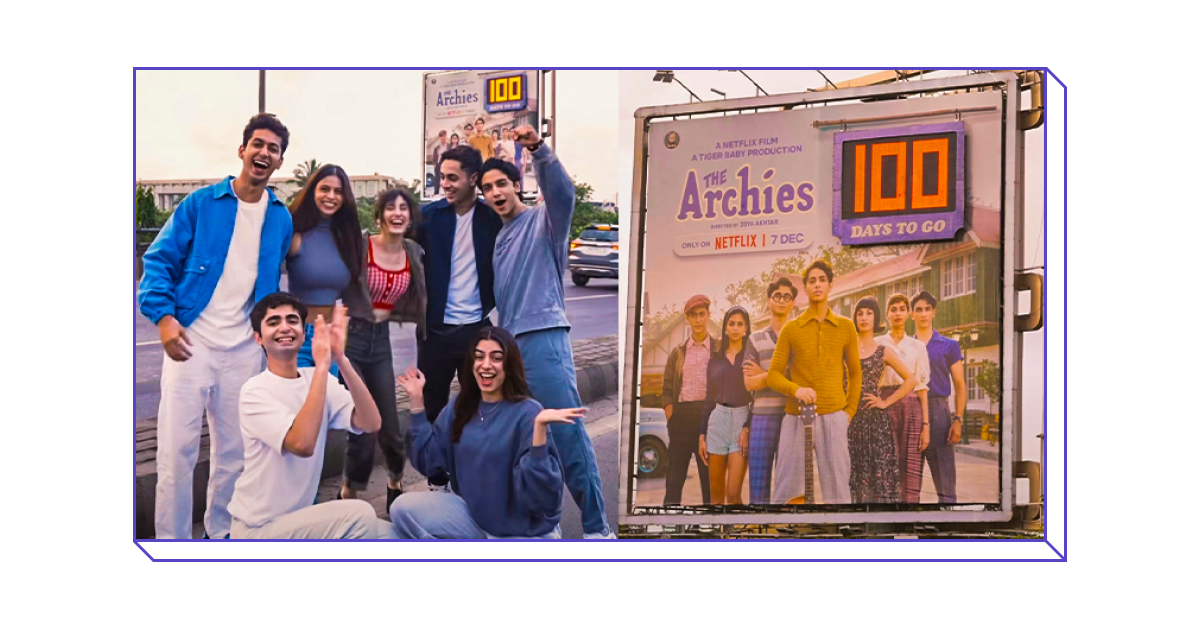
Marketing through the lens of WebEngage
WebEngage has supported numerous brands in these endeavors, from sending out timely communication to crafting personalized campaigns that hit the spot.
Please take a quick look with us.
Event volumes – 1.2 Trillion
In 2023, WebEngage witnessed a staggering 1.2 Trillion events on its platform, showcasing immense user activity and engagement.
Monthly Users Engaged – 1.2 Billion
By unlocking a little over 800+ global clients in reaching their customers on time via app and web, WebEngage addressed a mammoth volume of 1.2 Billion monthly users in 2023.
The platform indicated a widespread, tactful reach with impressive delivery rates by handling traction of such a high volume.
Industries covered – 15+
From BFSI to healthtech, D2C to e-commerce, travel & hospitality, and telecom, in 2023, the services spanned 15+ industries, showcasing versatility and adaptability across sectors.
Messages sent monthly- 42.8 Billion
Every month, the team at WebEngage facilitated messages sent via their systems to a mammoth volume of 42.8 billion – that’s like touching the entire world’s population 5 times.
Crazy.
Total Sent Volume – 465 Billion
A remarkable feat was achieved by sending 465 billion messages through 2023. These messages spanned from welcome pushes to onboarding nudges, from offers to deals, underlining the platform’s integral role in shaping brand communication.
Channel-wise sent volumes
- App Push –WebEngage delivered a promising 236 Billion app push notifications showcasing the relevance of mobile app engagement
- Web Push –The platform also sent out 198 Billion web pushes, highlighting the growing significance of web-based communication
- Email –Together for all its brands, a whopping 20.7 Billion emails were sent out in 2023, emphasizing that emails are still one of the most potent branded communication tools.
Channel-wise conversion numbers
- Email –With email, an astounding conversion rate of 13.17% was achieved, attesting to the effectiveness of the channel
- In-App –Another promising marketing lever, in-app pushes, showed a notable conversion of 10.14%, presenting itself as a critical driver for user action within the app.
- Web Personalization – Overall, as personalization ruled the year, with WebEngage, the efforts saw a conversion of 4.49%, demonstrating the success of the tailored experience.
Whether you’re managing an app or a website’s product owner, WebEngage will support you in your many marketing endeavors. With its extensive marketing automation suites and solid experience across various sectors, the platform has been state-of-the-art for running cutting-edge marketing campaigns.
Our Predictions for 2024
In 2024, the marketing landscape is poised for notable shifts. We’re sure that AI will get more significant than what it is now and slowly make its way into enabling real-time highly tailored campaigns.
Furthermore, sustainability, social responsibility, and showing up for the right cause will become strategic initiatives that most brands will lean over. The current audience is sensitive, quick to judge, and build impressions. Brands need to be on edge to maintain a strong brand voice.
Video content will continue to dominate. However, it will be shorter than it has ever been. Be prepared to have interactive formats and engagement during the stream.
The need to automate content will rise again – with each social media platform demanding its unique content style, repurposing, automation, and diversification will become the need of the hour. This is where generative AI will step in.
All in all, we marketers must be on our toes to do edgy stuff all the time. However, you don’t have to do it alone. We specialize in handholding our customers through evolving trends as preferences change and sentiments rise and fall. If you’re even a tiny bit curious to take a sneak peek at what we’re all about, book a free demo.
On that note, we wish you a happy and prosperous new year.





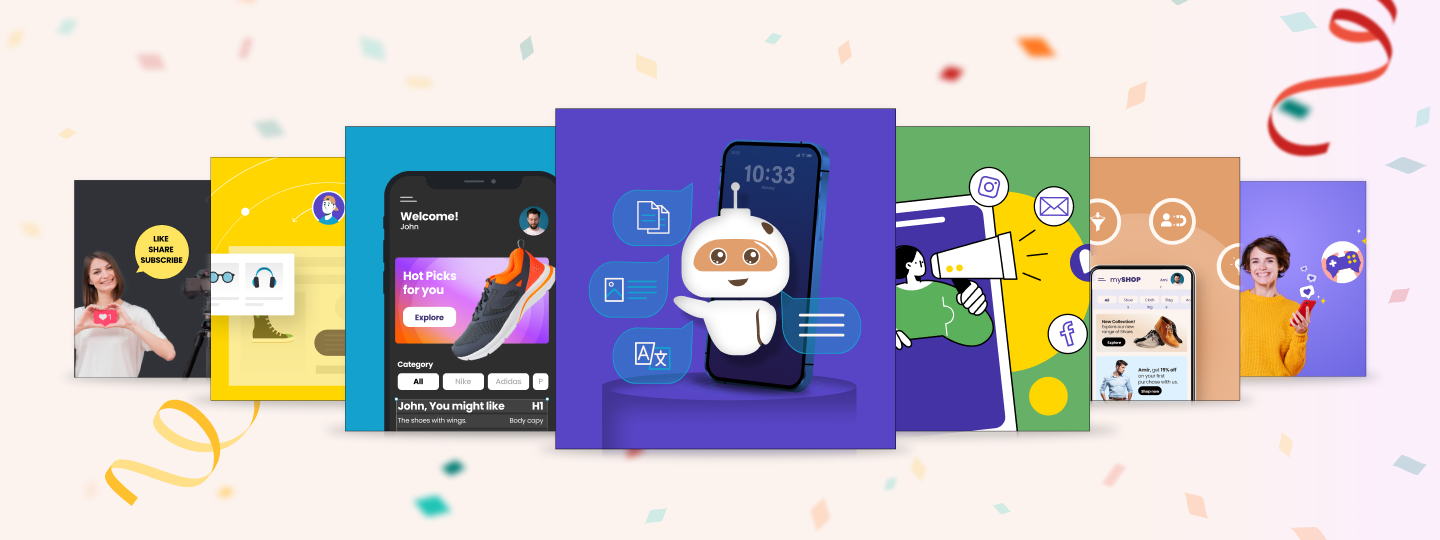

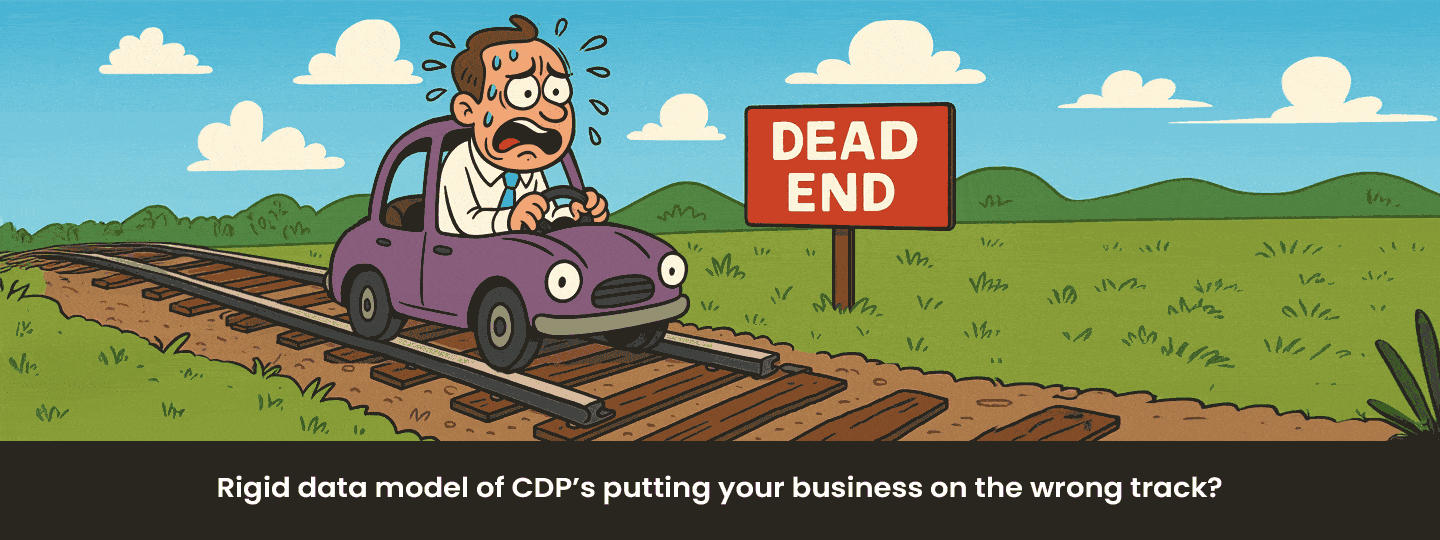
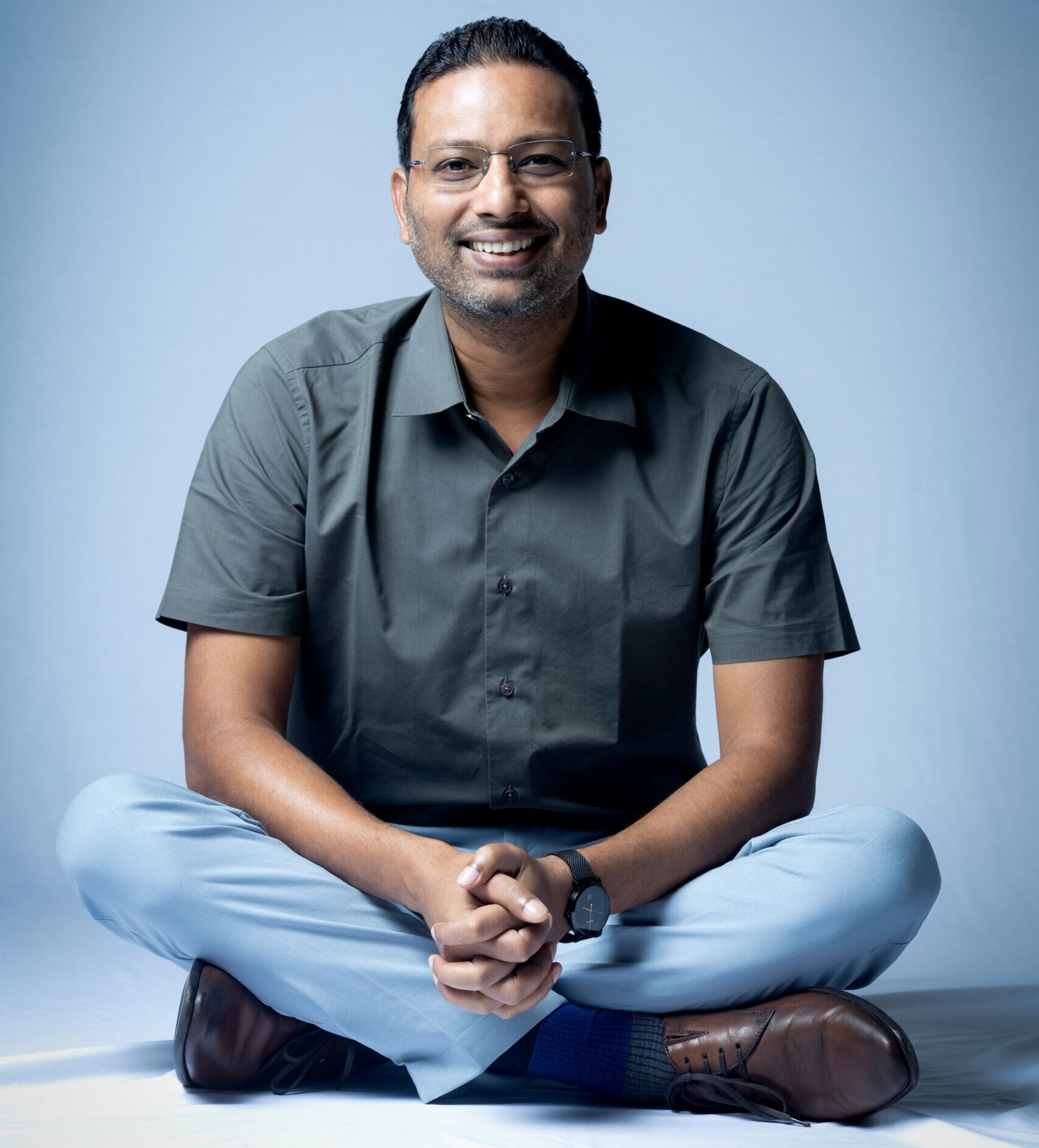 Avlesh Singh
Avlesh Singh
 Sanjay Mishra
Sanjay Mishra